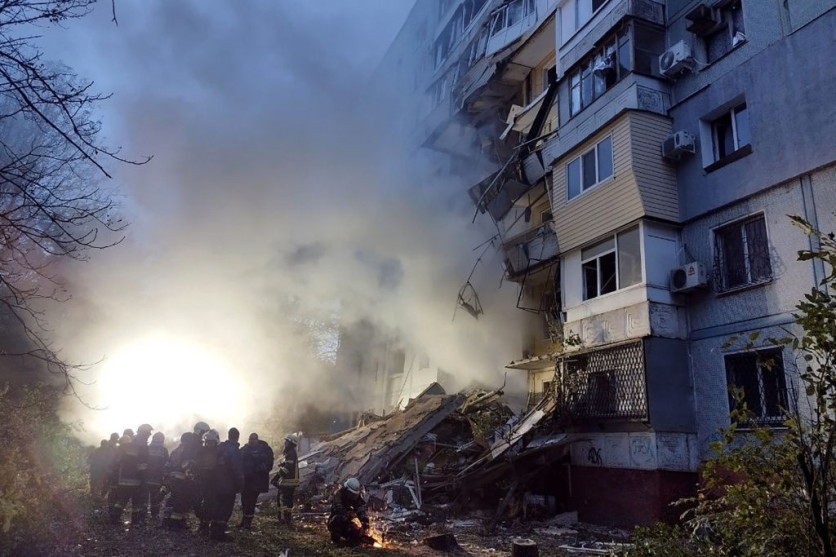Russia's latest attacks on Kyiv have included a combination of kamikaze drones and missiles. The southern city of Zaporizhzhia, which hosts the largest nuclear facility in Europe, was the target of these recent strikes.
The attacks add to the growing concerns about a nuclear disaster. The fighting between Russian and Ukraine forces near the plant has previously raised a "suicidal nuclear explosion" alarm from the UN's nuclear watchdog.

Suicide Drones
Ukrainian officials confirmed to CNN that the city was attacked early in the morning of Saturday by kamikaze drones and missiles.
The acting mayor of Zaporizhzhia, Anatoliy Kurtev, also made a post on Telegram about an "insidious attack on Zaporizhzhia with kamikaze drones."
Oleksandr Starukh, the head of Zaporizhzhia's regional military command, claimed that the city had been targeted by "ten or more" C300 missiles on Saturday morning following four "kamikaze" drone assaults during the previous night.
Suicide drones, or kamikaze drones, are a class of aerial weaponry. According to Interesting Engineering, they are referred to as loitering munitions since they can wait a while in an area that has been flagged as a possible target before launching an attack if an enemy asset is discovered.
During World War II, a Japanese plane carrying explosives intentionally crashed into an enemy target; this gave birth to the term "kamikaze."
In essence, kamikaze aircraft-either specifically designed or modified regular aircraft-are pilot-guided explosive missiles.
According to US officials who spoke to CNN in July, Iranian kamikaze drones from the Shahed series were presented to Russian authorities at Kashan Airfield, south of Tehran.
Russia has used Iranian suicide drones in Ukraine since September. These drones have a payload capacity of roughly 50 kg and can transport precision-guided missiles weighing 110 pounds (110 pounds).
"Deeply Worrying Development"
On Wednesday, the largest nuclear power plant in Ukraine-which is encircled by Russian troops - lost all external power required for critical safety systems.
The head of the UN's nuclear watchdog called it a "deeply worrying development." The International Atomic Energy Agency's Rafael Grossi issued the warning amidst a flurry of unrest in Russia's ongoing conflict with Ukraine.
Hundreds of cities and villages across Ukraine lost power when Russia conducted a huge missile attack on Monday in revenge for a truck bomb explosion that damaged a bridge connecting Russia with Crimea, which it annexed in 2014.
While the missile barrage this week claimed several Ukrainians' lives, the Western allies of Ukraine gathered at NATO headquarters in Brussels to discuss their response.
On Tuesday, NATO Secretary-General Jens Stoltenberg announced that the alliance would proceed with long-anticipated nuclear drills called "Steadfast Noon" the following week.
The exercise, which was organized before Russia invaded Ukraine in February, would include 14 of the 30 NATO member nations. According to NATO Secretary-General Jens Stoltenberg, most of the drills would take place more than 1,000 kilometers (625 miles) away from Russia.
Related Article : IAEF Chief Announces Mission to Ukraine After A 'Suicidal Nuclear Plant Explosion' Alarm Was Raised at Europe's Largest Nuclear Facility
This article is owned by Tech Times
Written by Joaquin Victor Tacla
![Apple Watch Series 10 [GPS 42mm]](https://d.techtimes.com/en/full/453899/apple-watch-series-10-gps-42mm.jpg?w=184&h=103&f=9fb3c2ea2db928c663d1d2eadbcb3e52)



